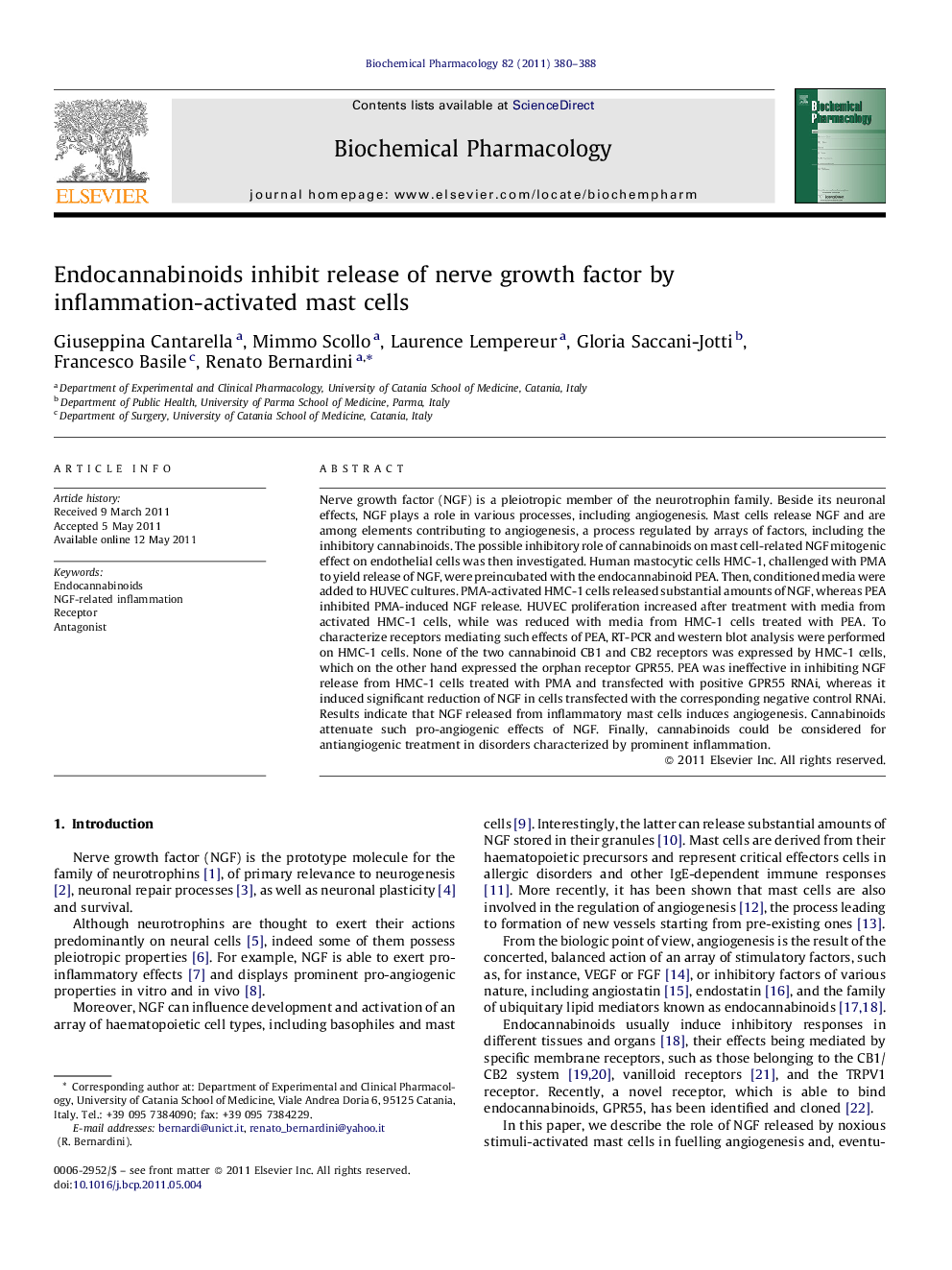| Article ID | Journal | Published Year | Pages | File Type |
|---|---|---|---|---|
| 2513114 | Biochemical Pharmacology | 2011 | 9 Pages |
Nerve growth factor (NGF) is a pleiotropic member of the neurotrophin family. Beside its neuronal effects, NGF plays a role in various processes, including angiogenesis. Mast cells release NGF and are among elements contributing to angiogenesis, a process regulated by arrays of factors, including the inhibitory cannabinoids. The possible inhibitory role of cannabinoids on mast cell-related NGF mitogenic effect on endothelial cells was then investigated. Human mastocytic cells HMC-1, challenged with PMA to yield release of NGF, were preincubated with the endocannabinoid PEA. Then, conditioned media were added to HUVEC cultures. PMA-activated HMC-1 cells released substantial amounts of NGF, whereas PEA inhibited PMA-induced NGF release. HUVEC proliferation increased after treatment with media from activated HMC-1 cells, while was reduced with media from HMC-1 cells treated with PEA. To characterize receptors mediating such effects of PEA, RT-PCR and western blot analysis were performed on HMC-1 cells. None of the two cannabinoid CB1 and CB2 receptors was expressed by HMC-1 cells, which on the other hand expressed the orphan receptor GPR55. PEA was ineffective in inhibiting NGF release from HMC-1 cells treated with PMA and transfected with positive GPR55 RNAi, whereas it induced significant reduction of NGF in cells transfected with the corresponding negative control RNAi. Results indicate that NGF released from inflammatory mast cells induces angiogenesis. Cannabinoids attenuate such pro-angiogenic effects of NGF. Finally, cannabinoids could be considered for antiangiogenic treatment in disorders characterized by prominent inflammation.
Graphical abstractFigure optionsDownload full-size imageDownload as PowerPoint slide
